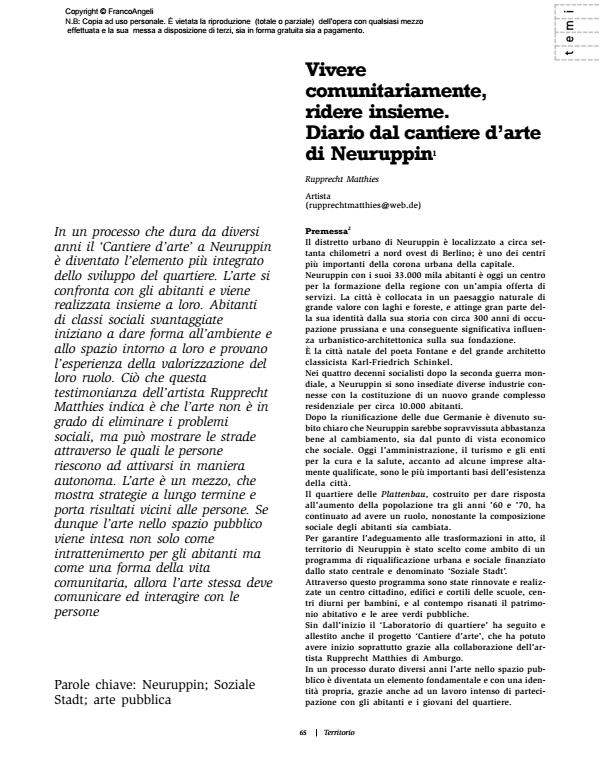Vivere comunitariamente, ridere insieme. Diario dal cantiere d’arte di Neuruppin
Titolo Rivista TERRITORIO
Autori/Curatori Rupprecht Matthies
Anno di pubblicazione 2010 Fascicolo 2010/53
Lingua Italiano Numero pagine 6 P. 65-70 Dimensione file 568 KB
DOI 10.3280/TR2010-053010
Il DOI è il codice a barre della proprietà intellettuale: per saperne di più
clicca qui
Qui sotto puoi vedere in anteprima la prima pagina di questo articolo.
Se questo articolo ti interessa, lo puoi acquistare (e scaricare in formato pdf) seguendo le facili indicazioni per acquistare il download credit. Acquista Download Credits per scaricare questo Articolo in formato PDF

FrancoAngeli è membro della Publishers International Linking Association, Inc (PILA)associazione indipendente e non profit per facilitare (attraverso i servizi tecnologici implementati da CrossRef.org) l’accesso degli studiosi ai contenuti digitali nelle pubblicazioni professionali e scientifiche
In the course of a process that has lasted several years, the 168 Territorio "Art Workshop" at Neuruppin has become the most integrated part of the development of the neighbourhood. Art is measured against the inhabitants and is performed together with them. The inhabitants of the disadvantaged social classes are starting to shape the environment and space around them and they are experiencing the importance of their role. What this report by the artist Rupprecht Matthies indicates is that art is not only able to eliminate social problems but that it can also show the ways in which people can manage to act independently. Art is a medium which shows long term strategies and leads to results that are close to people. If art in public spaces is therefore considered not just as entertainment for the inhabitants but also as a form of community life,then art itself must communicate and interact with people.
Parole chiave:Neuruppin; Soziale Stadt; public art.
Rupprecht Matthies, Vivere comunitariamente, ridere insieme. Diario dal cantiere d’arte di Neuruppin in "TERRITORIO" 53/2010, pp 65-70, DOI: 10.3280/TR2010-053010